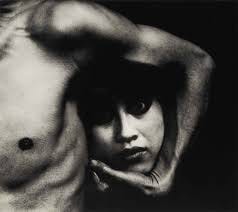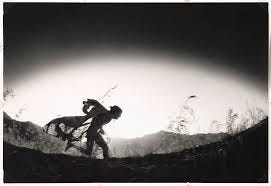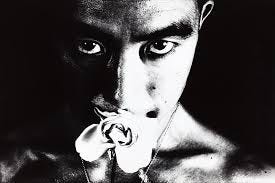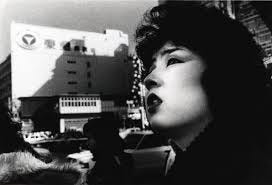After the bombings of Hiroshima and Nagasaki, it was not merely the Japanese landscape that lay in rubble, but the very fabric of social identity and longstanding Japanese culture seemed to have evaporated along with it. This is, in part, why post-WW2 Japanese art is particularly fascinating. It is a mixture of palpable tragedy, desperate longing to find that which was lost, ineffable reconciliation to the changing of the times, and not yet without its dazzling lace of hope.
You could, for example, look at the cultural landmark of Godzilla and how it was a manifestation of collective nuclear paranoia, or of the films made by Akira Kurosawa and how they longed to dignify the peoples of Japan amid a time of loss, uncertainty, and Western occupation(while ultimately being a tremendous bridge between Japanese and Western cultures), or the understated dramas of Yasujirō Ozu which highlighted the strife of Japanese families as the old generation began to clash with the ambitions of the younger generation, but I would instead like to take a look at the PROVOKE publication magazine which, though short-lived(November 1, 1968 - August 10, 1969) served as a vital means of articulation and expression for a generation that longed to speak without saying too much, if anything at all.
Though decidedly unpolitical, the roots of the PROVOKE magazine, and its subsequent stylistic movements, were distinctly progressive. Embracing a style called “ARE-BURE-BOKE” which translates to “GRAINY, BLURRY, OUT-OF-FOCUS”, PROVOKE set out to upend the rigidity of the rules in photography or to “free photography from subservience to the language of words.”
In a culture that was rapidly changing, there existed a growing need to challenge tradition and heritage, and with that came a new exploratory form of photography that shunned hyper-articulation, definite framing, and implicit meaning in favor of something that was more subjective and thought-provoking. Daido Moriyama, the most notable photographer from the PROVOKE era, said, “making a definitive declaration of intent or meaning kills the photograph.”
The longings and aspirations of the PROVOKE movement are certainly understandable. War, after all, comes when words begin to fail. It was a failure of diplomacy—of words and their articulation—that had resulted in war. So, the next generation, still feeling the sting and disorientation of defeat, sought a form of expression that might do without words for a little while, almost as if to buy some time to process what was happening and then speak more acutely to it later on. It was less of a protest against truth and tradition and more of a therapeutic escape from a pain that transcended words.
Art has a million useful endeavors, but one that I find most consistently helpful is the breeding of empathy for others through experiencing their art. It is often an experience that renders obsolete the pragmatic nature of the intellect and instead engages our lullabic(that being of a lullaby) sensibilities in order to tap into a childlike understanding of the value of each human soul.
In other words, all good art breeds empathy. PROVOKE era photography has bred within me a deep empathy for post-war Japan. Therefore, PROVOKE is good art.
Grace and Peace, undercrust






